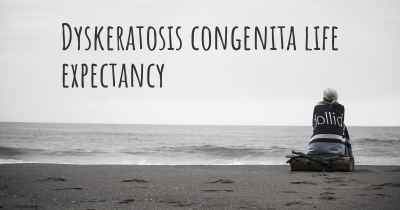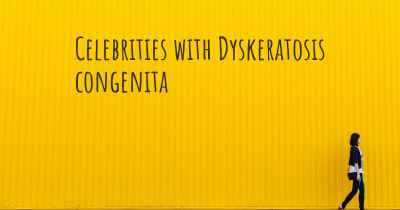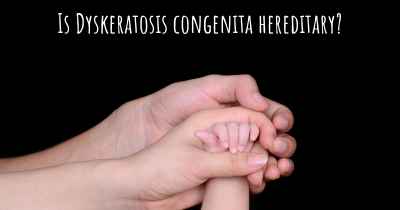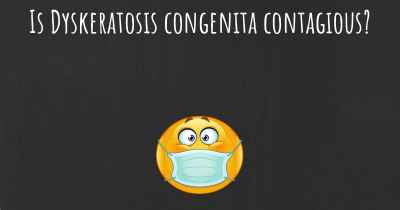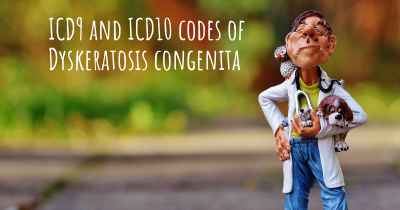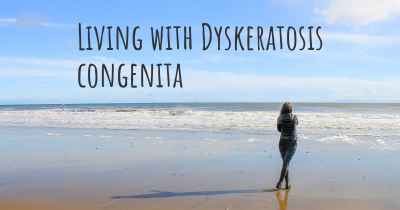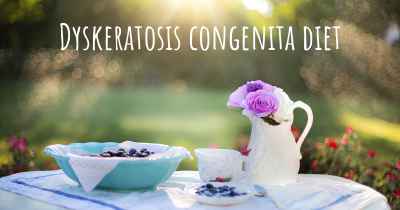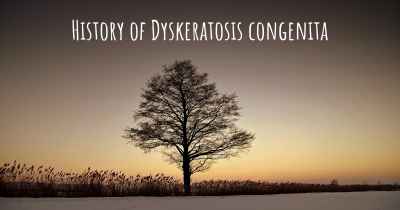Is there any natural treatment for Dyskeratosis congenita?
Are there natural treatment(s) that may improve the quality of life of people with Dyskeratosis congenita? Here you can see if there is any natural remedy and/or treatment that can help people with Dyskeratosis congenita

Is there any natural treatment for Dyskeratosis congenita?
Dyskeratosis congenita (DC) is a rare genetic disorder that affects multiple body systems, including the skin, nails, and bone marrow. It is characterized by a triad of symptoms: abnormal skin pigmentation, nail dystrophy, and leukoplakia (white patches) in the mouth and throat. DC is caused by mutations in certain genes that are involved in maintaining the length of telomeres, which are protective caps at the ends of chromosomes.
Currently, there is no known cure for Dyskeratosis congenita. However, there are several treatment options available that can help manage the symptoms and improve the quality of life for individuals with DC.
Treatment Approaches for Dyskeratosis congenita:
1. Hematopoietic Stem Cell Transplantation (HSCT):
Hematopoietic stem cell transplantation is the only curative treatment option for Dyskeratosis congenita. It involves replacing the faulty bone marrow cells with healthy cells from a compatible donor. HSCT can help restore normal blood cell production and improve bone marrow function. However, finding a suitable donor can be challenging, and the procedure itself carries risks and potential complications.
2. Androgen Therapy:
Androgens are a group of hormones that can stimulate the production of red blood cells and improve bone marrow function. Androgen therapy, such as danazol, has shown some benefit in treating anemia associated with Dyskeratosis congenita. However, it may have side effects and should be used under the supervision of a healthcare professional.
3. Supportive Care:
Supportive care plays a crucial role in managing the symptoms and complications of Dyskeratosis congenita. This includes regular monitoring of blood counts, managing infections, and addressing specific issues such as skin abnormalities, oral leukoplakia, and nail problems. Dermatological treatments, such as topical steroids or retinoids, may be used to improve skin manifestations.
4. Genetic Counseling:
Genetic counseling is essential for individuals with Dyskeratosis congenita and their families. It helps in understanding the inheritance pattern of the condition, assessing the risk of passing it on to future generations, and discussing available reproductive options.
Natural Treatment Options:
While there is no specific natural treatment for Dyskeratosis congenita, certain lifestyle modifications and complementary therapies may help improve overall well-being and manage specific symptoms. It is important to note that these approaches should be discussed with a healthcare professional and used alongside conventional medical care.
1. Healthy Diet:
A healthy diet rich in fruits, vegetables, whole grains, and lean proteins can support overall health and provide essential nutrients. Adequate nutrition is crucial for individuals with Dyskeratosis congenita, as they may be at risk of malnutrition due to various factors, including difficulty swallowing or poor appetite.
2. Exercise and Physical Activity:
Regular exercise and physical activity can help improve strength, stamina, and overall well-being. It is important to tailor the exercise routine to individual capabilities and consult with a healthcare professional before starting any new exercise program.
3. Stress Management:
Stress management techniques such as meditation, deep breathing exercises, and yoga may help individuals with Dyskeratosis congenita cope with the emotional and psychological challenges associated with the condition. It is important to prioritize mental health and seek support from healthcare professionals or support groups.
4. Complementary Therapies:
Some individuals with Dyskeratosis congenita may find complementary therapies such as acupuncture, massage, or aromatherapy helpful in managing specific symptoms or promoting relaxation. However, it is crucial to consult with a qualified practitioner and ensure these therapies do not interfere with ongoing medical treatments.
In conclusion, Dyskeratosis congenita is a rare genetic disorder for which there is currently no known cure. However, various treatment approaches, including hematopoietic stem cell transplantation, androgen therapy, and supportive care, can help manage the symptoms and improve the quality of life for individuals with DC. While there are no specific natural treatments for Dyskeratosis congenita, adopting a healthy lifestyle, managing stress, and exploring complementary therapies may provide additional support. It is important for individuals with DC to work closely with healthcare professionals to develop a comprehensive treatment plan tailored to their specific needs.
